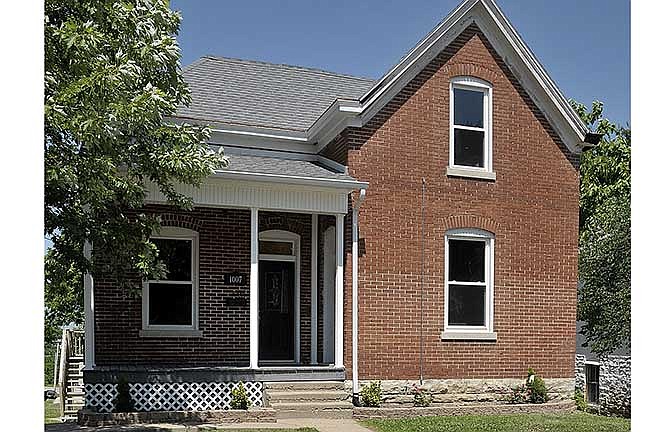An American Folk Victorian home was revived from boarded up windows and vacant rooms to become another historical gem.
The Historic City of Jefferson has named 1007 E. McCarty St., owned by Deb Brown, with the July Golden Hammer award.
This is Brown's fifth renovation project within the same block. She purchased this home in 2009 with two of the other homes.
She considered razing the home, because of its poor condition. But whenever she would go inside, Brown said she would think "it has so much potential."
"I really enjoy seeing these older properties come back to life," Brown said. "New construction oftentimes does not have the character that these older homes have, and it is exciting to see how the renovations can change the look and attitude of a neighborhood.
"It makes me very proud to know that I have in some small way contributed to a better place to live and helped our community."
This architectural style was popular at the turn of the 20th century.
"These were modest homes, typically vernacular in form but often contained details and features characteristic of high style buildings," said researcher Debbie Goldhammer.
A working-class version of the Queen Anne style, the home features an "L" shape, box gutters and gabled roof.
"Their popularity was made possible by railroads expanding into smaller towns and cities," Goldhammer said. "This made the transportation of mass-produced wood features quick and cheap to almost anywhere."
Brown's 1,700-square-foot property was built before 1908 at what was originally numbered as 1017 E. McCarty St.
Theresia Rakers is the first person documented to live in the home, as a widow. Rakers' husband, Herman, a Civil War veteran serving with the Missouri Home Guards, farmed in Taos, but the family of at least 10 lived in the city.
Herman Rakers died in 1907, so it is unclear whether he lived in the home, Goldhammer said.
Theresia and her daughter Tillie, 22, were living there in 1910 and renting the other side to Albert Prenger, a grocery store clerk. By 1913, Tillie and her husband, Anton Toebben, lived in the home but not her mother. And in 1915, the couple shared the address with her sister Elizabeth and husband, William Melchert, who was a horse shoer at what is now Prison Brews, 305 Ash St.
The Rakers' heirs sold the home in 1920 to Peter Kaullen, who worked at his father's Kaullen Mercantile, today's O'Donnehue's Restaurant. Kaullen eventually married Mabel, the daughter of Elizabeth and William Melchert.
The original family connection is lost by about 1945.
Most of the windows were broken out, and the doors were either broken or boarded up. The inside had no electric nor water, and had been totally gutted down to the studs.
When she found time to begin this project, the outside was the first priority, Brown said.
So, her efforts included new windows and doors, painting, a new front porch and landscaping.
"These are all things that don't cost a lot of money but can make a huge impact on how a property looks and gives it curb appeal," Brown said.
She has not decided how to use the interior, but is considering commercial below and residential above.
Brown hopes that as each property is cleaned and renovated, the neighborhood receives a boost of pride and inspiration to do the same.
"As we worked on this renovation, we had many people walk or drive by and say they loved what we were doing," Brown said.

